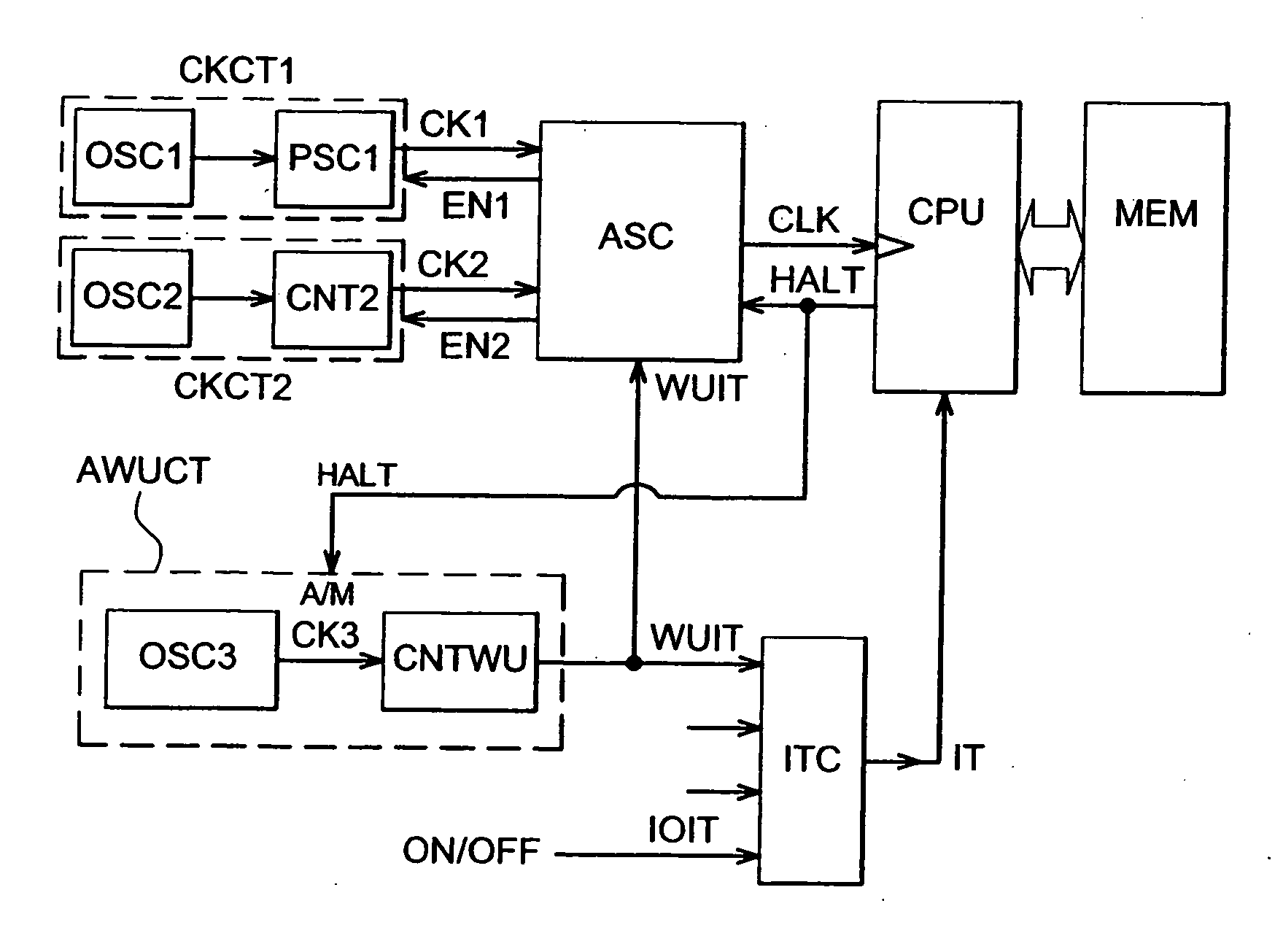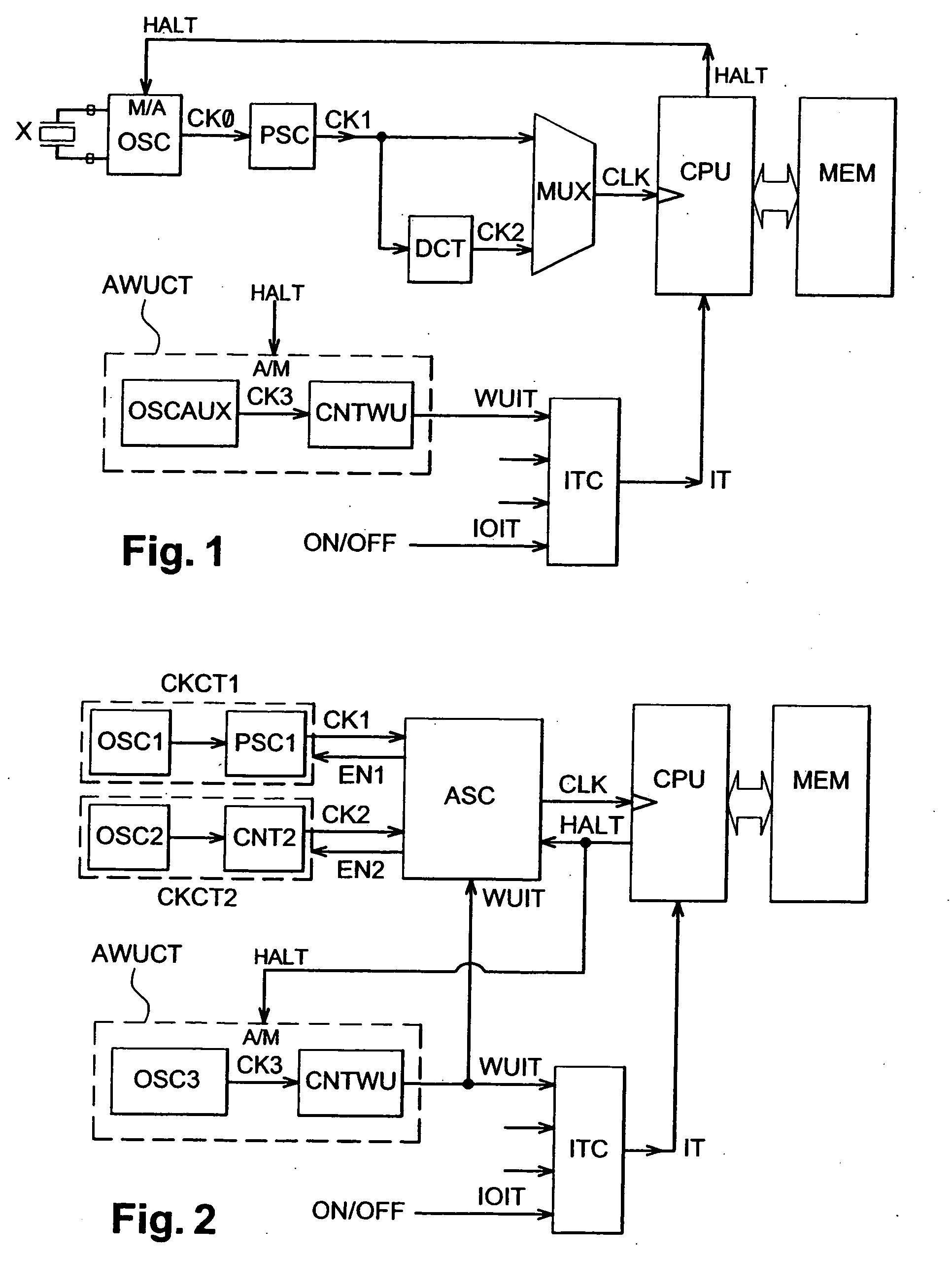Microprocessor comprising operating modes with low current consumption
a microprocessor and operating mode technology, applied in the field of microprocessors, can solve the problems of unjustified excess consumption, high current consumption, and considerable electric power consumption of mode run
- Summary
- Abstract
- Description
- Claims
- Application Information
AI Technical Summary
Problems solved by technology
Method used
Image
Examples
Embodiment Construction
EN1 EN2 SELCK CK X X X 0 (RESET) MD0 (HALT) 0 0 X 0 1 0 0 (inhibited) 0 (RESET) Md1 (RUN) 1 0 0 CK1 1 0 1 0 0 (RESET) MD2 (LOW 0 1 1 CK2 1 (inhibited) PWR) 1 1 0 0 (CNT) MD3 1 1 1 CK2 (SWITCH) 0 1 Change from 1 1 1 CK2 1 1 MD3 to MD1 1 1 0 CK1 (RUN
[0148] Provision is made so that the circuit of the register CMREG does not authorize the CPU to simultaneously set the flags ENOSC1 and ENOSC2 to the level 0. As appropriate, the register CMREG keeps the former values X of the flags ENOSC1 and ENOSC2, such that at least one of the flags ENOSC1 and / or ENOSC2 is on the level 1. This set point allows one of the two oscillators OSC1 or OSC2 to be awakened automatically when the CPU wakes up at the end of mode HALT.
[0149] On the other hand, in the mode HALT precisely, as explained above with regard to the step 33 in FIG. 8, the control circuit FSM3 sets the two signals EN1 and EN2 to the level 0, which effectively deactivates the two oscillators OSC1 and OSC2 simultaneously, even if at least o...
PUM
 Login to View More
Login to View More Abstract
Description
Claims
Application Information
 Login to View More
Login to View More - R&D
- Intellectual Property
- Life Sciences
- Materials
- Tech Scout
- Unparalleled Data Quality
- Higher Quality Content
- 60% Fewer Hallucinations
Browse by: Latest US Patents, China's latest patents, Technical Efficacy Thesaurus, Application Domain, Technology Topic, Popular Technical Reports.
© 2025 PatSnap. All rights reserved.Legal|Privacy policy|Modern Slavery Act Transparency Statement|Sitemap|About US| Contact US: help@patsnap.com



